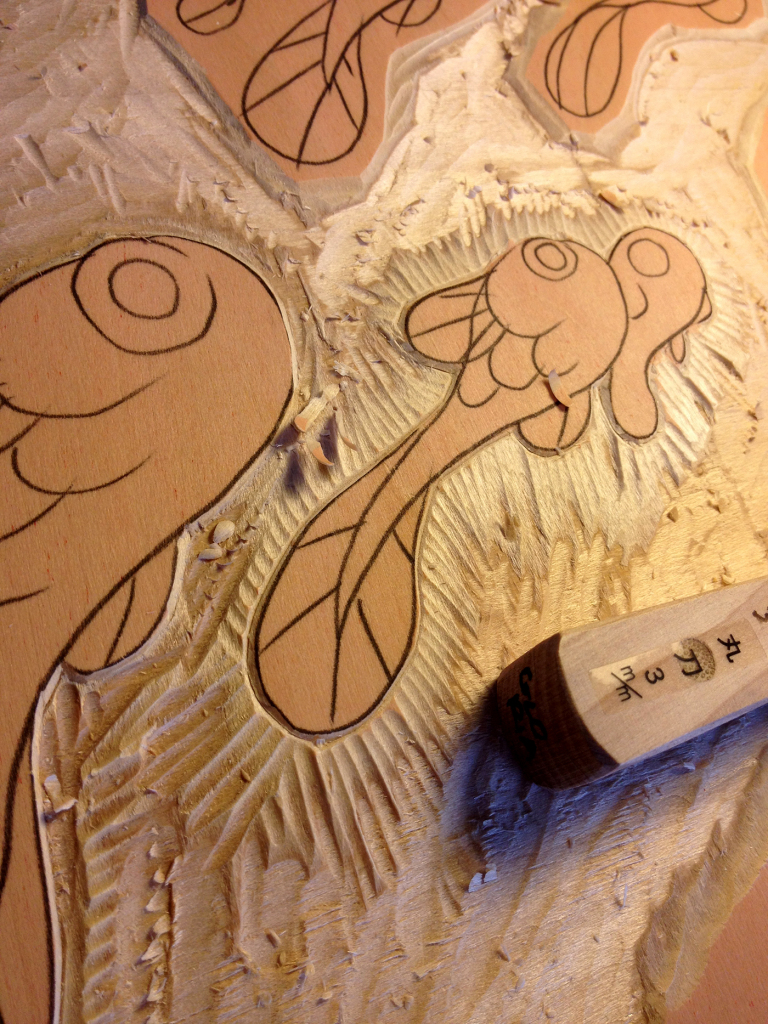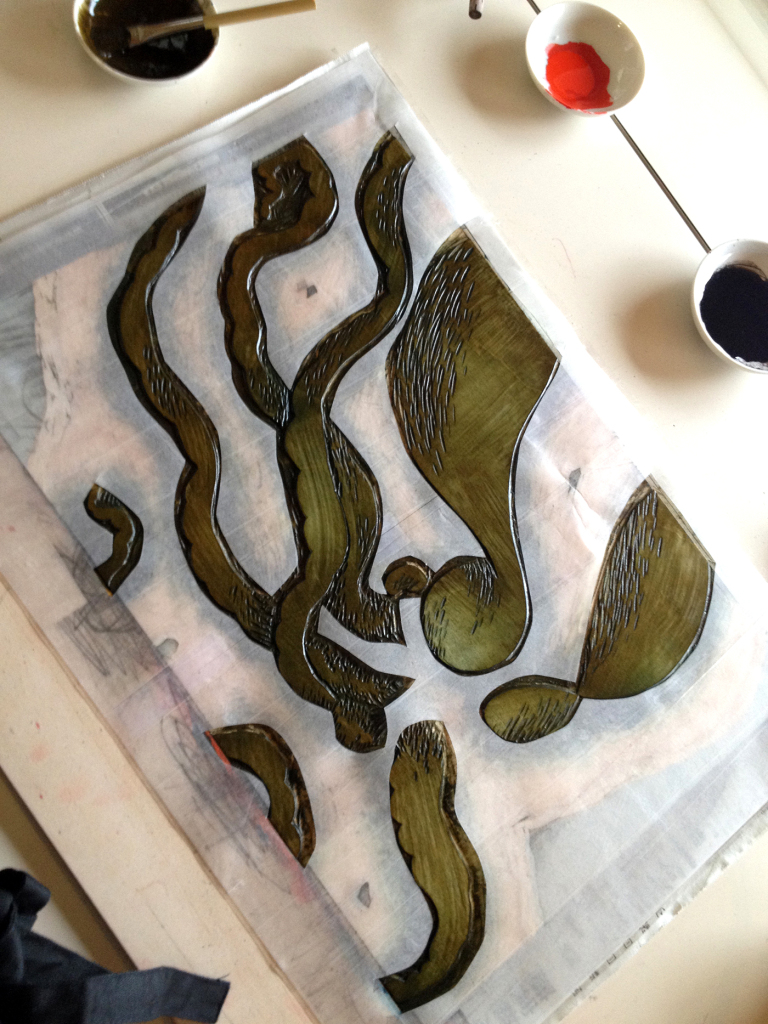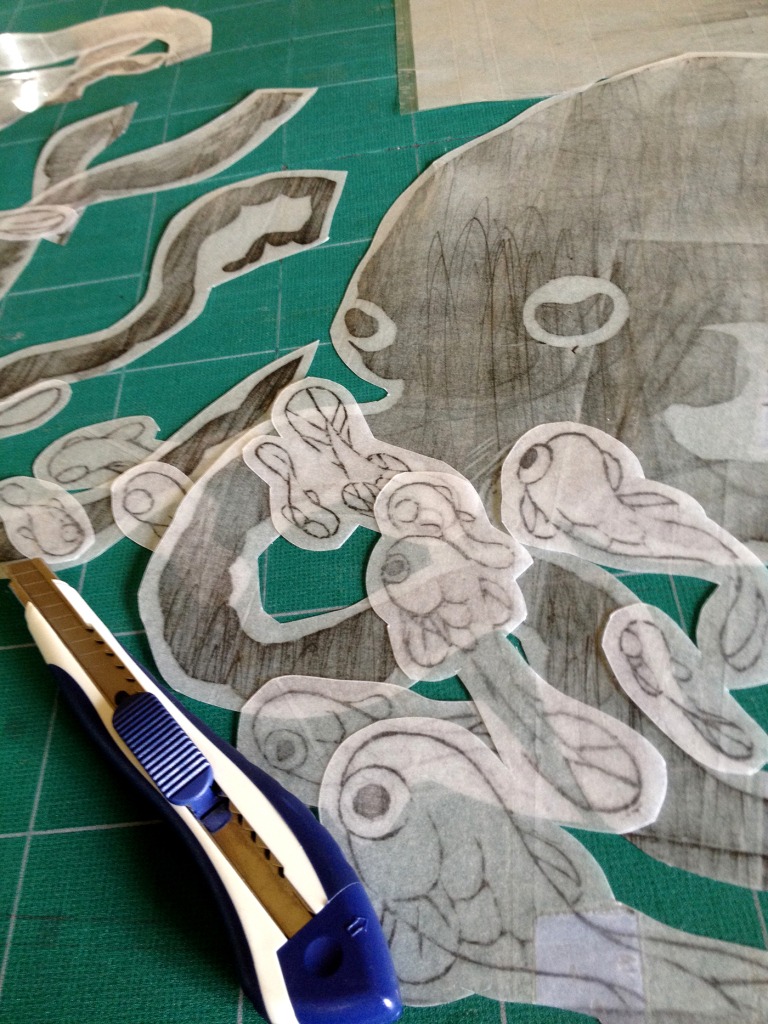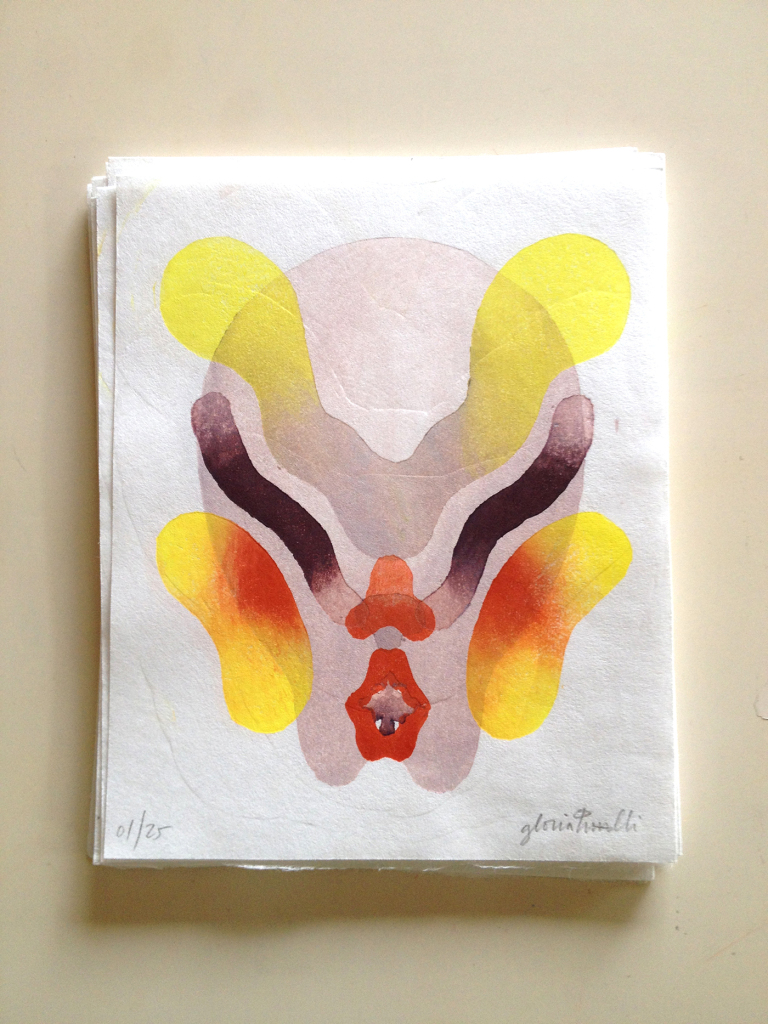During the time spent at the Nagasawa Art Park the schedule was very demanding: “Eight hours a day, 5 full days per week; the teachers were very strict about timetables, they demanded full attendance and focus during all the workshops – Gloria continues – our group was formed by six people: one from England, an American, an Australian, a girl from Hong Kong, a Canadian and an Italian, me. There were 4 printers, a designer and an illustrator, me again. The mutual exchange between the participants played an important role. You can learn a lot not only from teachers or people, but also from the involved artists.”
In addition to a professional and technical improvement, the journey seems to have enriched her perspectives. The return to Toulouse, where Gloria lives with her family, carried deep changes. “I had already participated to an artist-in-residence programme in Island last year. In Japan I got to know a different cultural approach, not only in the use of technique, but also in everyday life, as for example in the relationship with food and with the family that hosted me – she explains.- The approaches are much more inner, everything seems more real and acquires its own time and space. Hence you begin to organise your daily life and to save moments for specific things. Then even distractions disappear and you find a space which is finally all yours.”
This new dimension goes beyond the rules of frenzy, of flexibility at all costs, of the logic behind the exasperated multitasking and of the overexposure to the social media. A few days ago Gloria also abandoned Facebook, the most famous and common social network, a link that kept her in contact with many people involved with illustration, in general, and work in particular. “This autumn many things will happen and I could have filled in my profile but I decided not to do that anymore; I did not simply cancel my profile, I literally cleared it, I deleted four years of likes, comments, views, posts, pictures and tags and now there is nothing left- she reveals- I did it because I had a committed need of frankness and honesty. I saw again the enormous amount of images, conversations and small talks, jokes, debates, works of art and horrible works by whom I was consciously overwhelmed. While I was deleting these posts, I realised I remembered all of them. Every image, every comment, every single like. Even if a click is a mechanical gesture, it leaves a lasting sign not only in Facebook’s memory, but also in ours.” And she continues: “I thought that if other people have infected me, I must have infected them as well. Today I am not sure anymore that Facebook is the right place where to share art, broadly speaking, for illustrators, draftsmen and cartoonists – Pizzilli keeps on- What we define as the “daily amount of creativity” is nothing more than an interference with our original imagination.” Let’s put it this way: an illustrator shares on Facebook the product of his work. Every day he shares a sketch, a preview, a complete work. He is good, people like him, he gets some likes, comments, compliments. “It is good for his ego, it makes him do more, share more – she continues-. We call sharing this way of interaction, but, actually, it is an individual “bombarding” another. Facebook is not a social network for artists but a general one. And that is how sketches, previews, tests and hopes end up next to pictures of a happy hour, to racist comments, holiday-selfies or pictures of murdered people. That is the space which the efforts of a naive illustrator occupy. A footnote of the ego in the bustle.” According to Gloria, the ones who go through this “visual bombing” are especially young people, prospective illustrators.



